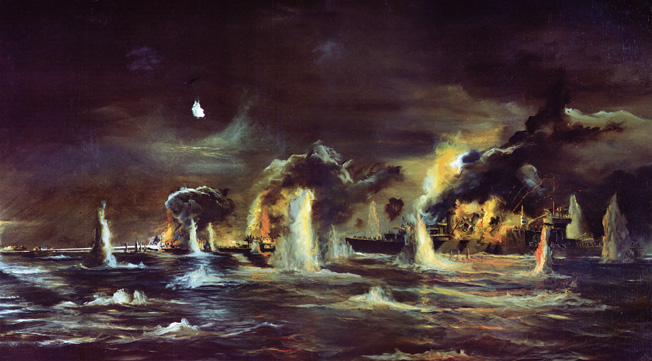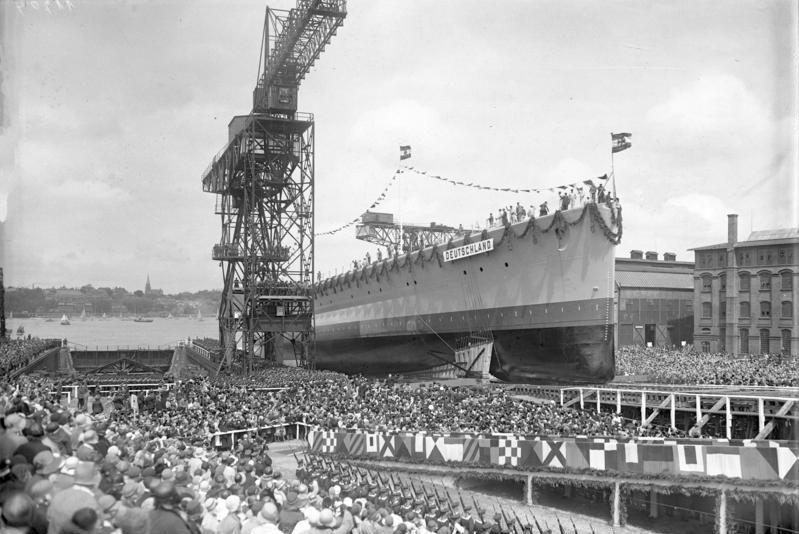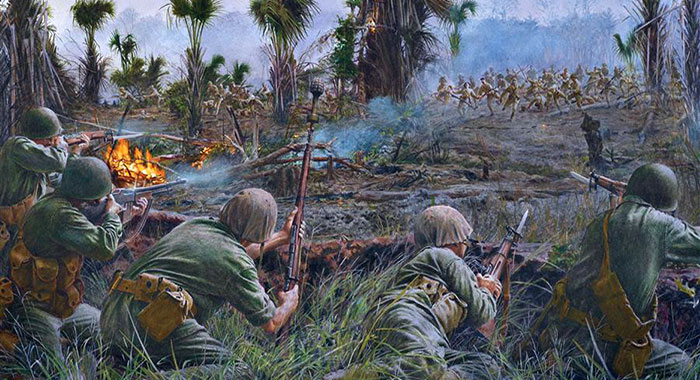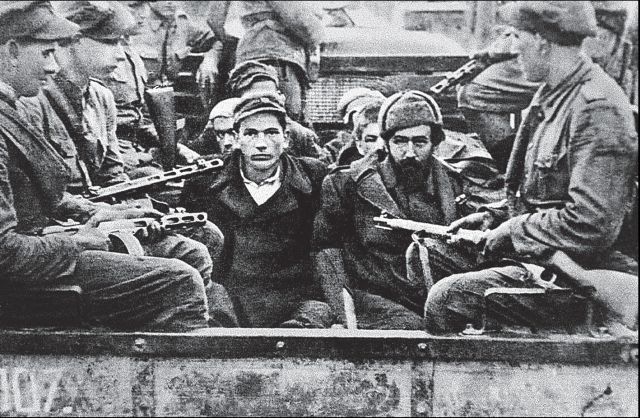Chapter 578: The Axis Central Powers Kaisergipfel (Emperor/ Imperial Summit)
Chapter 578: The Axis Central Powers Kaisergipfel (Emperor/ Imperial Summit)

In Prague, the Two-Emperor's -City, the Axis Central Powers held summits (known as Kaisergipfel, literally Emperor or Imperial Summits) regulary and discussed their future plans and ideas for Europa, Africa, yes a whole world either directly ruled or dominated by them they hoped. This Kaisergiplel were clearly divided into various major topics, with one of the first ones dealing with territorial questions in Africa between the Axis Cenral Power member states. While there was some discussion about ressource rich areas or heavily populated ones, as well as access to the major rivers and thereby trade centers and points across the whole African Continent. This territorial and ethnic debates about who should rule what kind of land suddenly became much more heated as the Axis Central Powers discussed the fate of Europe during one of the later Kaisergipfel. Unlike in Africa, in Europe there were direct national and ethnic interests of the Nation States who made up the Axis Central Powers. For Example the German Empire planned to annex parts of Poland up until the Weichsel (Wista/ Vistual) for the province of Neuostpreußen (New East Prussia) and Warthe (Warta/ Varta) for the province of Südpreußen (Southprussia), known as East Posen in the earliest plans. The same was true vor German plans to annex the United Baltic Duchy, the Kingdoms of Denmark, Sweden, Norway and the United Kingdom of the Netherlands into the Greater German Empire. Even on the western border, the German Empire played with the idea to secretly annex further French Imperial land (Belgium/ Burgundia), however they were not alone with such megalomanic plans. In Exchange for this the French Empire was promised Catalonia from the Kingdom of Spain, that in return would get more Colonies from the Allies, yes the German even promised them to take all of Iberia, by annexing Portuga, to further help them reform their global American Empire either by outright annexation of the independent countries there, by forming Spanish Protectorates, or even a Letino Union or Block of some kind, like the Dominions in the British Empire. France meanwhile dreamed about getting parts of their territory lost to Germany and Italy back in Europe, expand their holdings in Africa (Egypt and Central Africa), America (French Canada and Lousianna), South Asia (India), Southeast Asia and even Oceania or Australia on expense of the British Empire.

At the same time Austria-Hungary planned on annexing parts of Poland (West Galicia) and have the rest of Poland, White Ruthenia and Ukrainia as well as Georgia as puppet states. Their plans for the vassals they already had in the Balkan Peninsula meanwhile were rather direct, as the Austrian-Hungarians tried to integrate these Balkan States into the United States of Greater Austria as their Empire. Against this the Kingdom of Greek and Bulgaria sought help from their fellow orthodox brothers in the Russian Empire and even the Neo-Ottoman Empire, as both were concearned with the growing Austrian-Hungarian dominance in southeast Europe, the Balkans and South Russia. The Italian Kingdom/ Roman Empire also tried to serve as a protector for Greece, as they hoped to regain their influence on the Balkan Peninsula back from Austria-Hungary his way. The main Italian goals however besides French and Spanish mainland territories, as well as their and the Allies colonies around the Mediterranean Sea, in the Middle East and East Africa to reeestablish the borders of the Ancient Roman Empire. The only Empire not making any demands for further Expansion was Russia, who'se Emperor hoped to regain more control, centralisation and stability, by forming a majorly Russian ethnic nation state, instead of further expanding. This opened the possibility for the German, Austrian-Hungarian, Neo-Ottoman Empires (as well as the Japanese and their Co-Prosperity Sphere) to carve out parts of the Soviet Union and the former First Russian Empire. The Neo-Ottomans further planned on taking much of former Russian Central Asia, mainly the majorly Mohammedan parts, while at the same time planning to annex Persia, the Arabian Peninsula, Egypt, parts of former China (East Turkestan) as well as the Mohammedan parts of British Raj/ India (later Pakistan). While adressing and discussing major issues and overlapping territorial claims and goals, the Emper Summit, Imperial Summit or Kaisergipfel did not adress secret plans of each Axis Central Powers member nation of not only outright annexing bigger pars of one another, but also in some chases resetteling the majority of the population and ethnic group living there in exchange for their own. Most of this plans (with the exception of the Neo-Otomans with the Armenian, Kurds or Arabs) however only included forced resettlement and temporary puing parts of these populations in Resettlement Camp (also known as Population Concentration Camps -PCC-, or Ethnic Concentration Camps -ECC-).

In Prague, the Two-Emperor's -City, the Axis Central Powers held summits (known as Kaisergipfel, literally Emperor or Imperial Summits) regulary and discussed their future plans and ideas for Europa, Africa, yes a whole world either directly ruled or dominated by them they hoped. This Kaisergiplel were clearly divided into various major topics, with one of the first ones dealing with territorial questions in Africa between the Axis Cenral Power member states. While there was some discussion about ressource rich areas or heavily populated ones, as well as access to the major rivers and thereby trade centers and points across the whole African Continent. This territorial and ethnic debates about who should rule what kind of land suddenly became much more heated as the Axis Central Powers discussed the fate of Europe during one of the later Kaisergipfel. Unlike in Africa, in Europe there were direct national and ethnic interests of the Nation States who made up the Axis Central Powers. For Example the German Empire planned to annex parts of Poland up until the Weichsel (Wista/ Vistual) for the province of Neuostpreußen (New East Prussia) and Warthe (Warta/ Varta) for the province of Südpreußen (Southprussia), known as East Posen in the earliest plans. The same was true vor German plans to annex the United Baltic Duchy, the Kingdoms of Denmark, Sweden, Norway and the United Kingdom of the Netherlands into the Greater German Empire. Even on the western border, the German Empire played with the idea to secretly annex further French Imperial land (Belgium/ Burgundia), however they were not alone with such megalomanic plans. In Exchange for this the French Empire was promised Catalonia from the Kingdom of Spain, that in return would get more Colonies from the Allies, yes the German even promised them to take all of Iberia, by annexing Portuga, to further help them reform their global American Empire either by outright annexation of the independent countries there, by forming Spanish Protectorates, or even a Letino Union or Block of some kind, like the Dominions in the British Empire. France meanwhile dreamed about getting parts of their territory lost to Germany and Italy back in Europe, expand their holdings in Africa (Egypt and Central Africa), America (French Canada and Lousianna), South Asia (India), Southeast Asia and even Oceania or Australia on expense of the British Empire.

At the same time Austria-Hungary planned on annexing parts of Poland (West Galicia) and have the rest of Poland, White Ruthenia and Ukrainia as well as Georgia as puppet states. Their plans for the vassals they already had in the Balkan Peninsula meanwhile were rather direct, as the Austrian-Hungarians tried to integrate these Balkan States into the United States of Greater Austria as their Empire. Against this the Kingdom of Greek and Bulgaria sought help from their fellow orthodox brothers in the Russian Empire and even the Neo-Ottoman Empire, as both were concearned with the growing Austrian-Hungarian dominance in southeast Europe, the Balkans and South Russia. The Italian Kingdom/ Roman Empire also tried to serve as a protector for Greece, as they hoped to regain their influence on the Balkan Peninsula back from Austria-Hungary his way. The main Italian goals however besides French and Spanish mainland territories, as well as their and the Allies colonies around the Mediterranean Sea, in the Middle East and East Africa to reeestablish the borders of the Ancient Roman Empire. The only Empire not making any demands for further Expansion was Russia, who'se Emperor hoped to regain more control, centralisation and stability, by forming a majorly Russian ethnic nation state, instead of further expanding. This opened the possibility for the German, Austrian-Hungarian, Neo-Ottoman Empires (as well as the Japanese and their Co-Prosperity Sphere) to carve out parts of the Soviet Union and the former First Russian Empire. The Neo-Ottomans further planned on taking much of former Russian Central Asia, mainly the majorly Mohammedan parts, while at the same time planning to annex Persia, the Arabian Peninsula, Egypt, parts of former China (East Turkestan) as well as the Mohammedan parts of British Raj/ India (later Pakistan). While adressing and discussing major issues and overlapping territorial claims and goals, the Emper Summit, Imperial Summit or Kaisergipfel did not adress secret plans of each Axis Central Powers member nation of not only outright annexing bigger pars of one another, but also in some chases resetteling the majority of the population and ethnic group living there in exchange for their own. Most of this plans (with the exception of the Neo-Otomans with the Armenian, Kurds or Arabs) however only included forced resettlement and temporary puing parts of these populations in Resettlement Camp (also known as Population Concentration Camps -PCC-, or Ethnic Concentration Camps -ECC-).





















